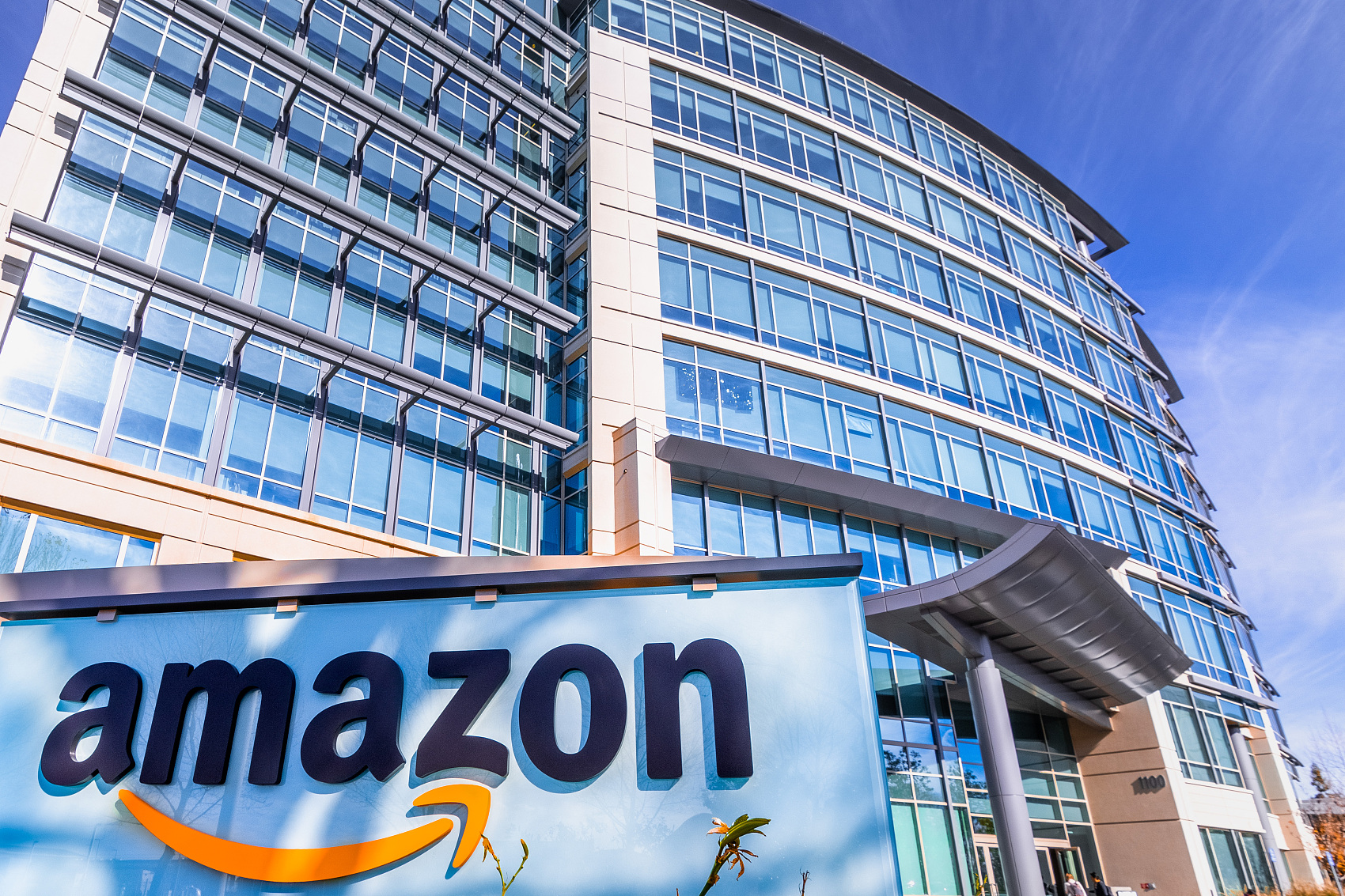Earnings Preview | Amazon Awaits Removal of ‘AI Laggard’ Label as Advertising Business Emerges as Potential Dark Horse

Amazon will release its third-quarter earnings after the U.S. stock market closes on October 30 Eastern Time (in the early morning of October 31 Beijing Time).
$Amazon (AMZN.US)$ The company is scheduled to release its third-quarter earnings after the U.S. market closes on October 30 (early morning on October 31, Beijing time). The market consensus expects the company’s Q3 revenue to reach $177.8 billion, adjusted earnings per share of $1.98, operating profit of $19.8 billion, and a gross margin of exactly 50%.
Earnings Review
Amazon’s overall performance in the second quarter was impressive: total revenue reached $167.7 billion, surpassing the market expectation of $162.09 billion; earnings per share were $1.68, also higher than the forecasted $1.33.
 In detail, e-commerce sales still account for two-thirds of its total sales, with revenue in the second quarter alone exceeding $100 billion. Online store sales and third-party seller revenue both grew by 11% in the second quarter.
In detail, e-commerce sales still account for two-thirds of its total sales, with revenue in the second quarter alone exceeding $100 billion. Online store sales and third-party seller revenue both grew by 11% in the second quarter.
According to management, Amazon has expanded its same-day or next-day delivery service to 4,000 smaller regions; the company has formed multiple new brand partnerships, including Origins cosmetics under Estee Lauder (EL.US) and a dedicated Nike (NKE.US) brand store; Amazon has also continued to optimize inbound channels at regional distribution centers, with orders fulfilled directly from fulfillment centers to delivery increasing by 40% year-on-year, average shipping distance per package decreasing by 12%, and processing steps per package reduced by nearly 15%.
CEO Andy Jassy stated that these initiatives are comprehensively improving the efficiency of the distribution system, but he acknowledged the potential uncertainty brought about by tariff policies.
Amazon Web Services (AWS) revenue increased by 17.5% year-on-year to $30.9 billion, while advertising revenue grew by 23% to $15.69 billion. However, due to lagging behind competitors in cloud business growth rates, the company has earned the reputation of being a “laggard in the AI field,” and its Q3 revenue guidance fell short of market expectations, disappointing investors who had hoped for quick returns on its large-scale AI investments. The day after the earnings announcement, the company’s stock price dropped by 8.27%.
In the eyes of many investors, to reverse this perception, AWS needs to demonstrate a resurgence in growth to 20%. However, in reality, AWS remains the undisputed leader in the cloud computing infrastructure market, as recent service outages have highlighted the internet’s heavy reliance on its services.
Amazon is also continuing to expand its investment in data center construction, particularly in its AI computing initiative, ‘Project Rainier,’ which the company says will become operational in the second half of 2025.
Jassy stated that the company will continue to invest in chips, data centers, and power sectors, with management seeing unprecedented opportunities in generative artificial intelligence.
“Our comprehensive advancements in the field of AI are continuously improving customer experience, accelerating innovation, enhancing operational efficiency, and driving business growth. We are highly optimistic about future prospects,” he added.
Chief Financial Officer Brian Olsavsky noted during the earnings call that capital expenditures reached $31.4 billion in the second quarter, primarily directed towards AWS infrastructure and AI-related areas. He revealed that this expenditure level “largely reflects” the investment pace for the third and fourth quarters, bringing total projected capital expenditures for the full year of 2025 to $118 billion when combined with the $24.3 billion spent in the first quarter.
Earnings outlook
As in the second quarter, investors will remain focused on AWS performance. Analysts forecast that the cloud division’s revenue for the third quarter will reach $32.4 billion, with operating profits at $11.1 billion. Additionally, the impact of the significant AWS outage in October will be closely scrutinized.
AWS’s profit margin stood at 32.9% in the previous quarter, and it is expected to rise to 34.2% in the third quarter, though this figure remains lower than levels exceeding 35% earlier this year. S&P Global pointed out that ahead of the earnings release, analysts’ projections for AWS’s Q3 profit margins varied significantly, ranging from 30.7% to 38.1%.
Also drawing considerable attention is Amazon’s progress in building and operating AI capabilities. As mentioned earlier, there are concerns that the company may be losing momentum in its competition with Google (GOOGL.US), Microsoft (MSFT.US), Oracle (ORCL.US), CoreWeave (CRWV.US), and NEBIUS (NBIS.US). S&P Global noted that the market is closely monitoring Amazon’s investments in AI, as the company’s capital expenditure figures for fiscal year 2026 continue to rise.
Wall Street generally holds a positive outlook on Amazon’s cloud business prospects.
Wedbush noted that the growth rate of AWS’s order backlog, along with higher capital expenditure guidance for 2025, reflects encouraging underlying demand. Analyst Scott Devitt and his team believe that the company’s stock offers an attractive risk-reward ratio.
In a report, Devitt wrote, “Given the positive commentary surrounding AWS growth, favorable trends in the core retail business, and strong advertising customer demand, we hold a constructive view heading into this earnings release.” Notably, the market consensus expects Amazon’s Q3 operating profit to exceed expectations. The firm has assigned Amazon an ‘Outperform’ rating with a price target of $280.
Analysts at Bank of America stated that investor sentiment toward AWS remains cautious but is expected to improve as the timeline extends into 2026.
“We expect management to provide a positive signal regarding AWS growth in 2026,” they wrote, citing several tailwinds such as increased capacity from the ‘Rainier project,’ faster-growing backlogs, and Amazon’s potential showcase of new AI-related infrastructure at its re:Invent conference in December.
KeyBanc analyst Justin Patterson also believes investors are overly pessimistic about Amazon’s cloud business, making the stock an attractive buying opportunity. For context, Amazon’s shares have risen only 2.20% year-to-date, making it the weakest performer among the ‘Magnificent Seven’ U.S. stocks.
The analyst forecasts sustained improvement in cloud revenue growth through 2026. Additionally, Patterson sees Amazon’s advertising business driving retail profit growth, while its grocery segment could become increasingly significant in the coming years. He also highlighted that Amazon’s current stock valuation is significantly below its historical average.
UBS Group analyst Karl Keirstead noted that market expectations for AWS’s growth rate this quarter are around 18%. He remains cautious about a near-term rebound in growth, predicting the third-quarter growth will stay at 17%. However, he believes performance is more likely to break out in the fourth quarter or the first half of 2026 as cloud computing capacity expands.
Beyond its cloud business, Amazon has other positive catalysts.
Last Tuesday, Amazon announced plans to replace 600,000 jobs with robots by 2033 to reduce operational costs, a move that directly bolstered its share price. Benchmark analyst Daniel Kurnos believes this reform will enhance operating margins over the long term.
Morgan Stanley is also focused on the potential billions of dollars in cost savings that Amazon’s next-generation robotic warehouses could bring in the coming years. Analyst Brian Nowak recently stated, “We have consistently believed that the market has yet to fully appreciate the progress Amazon’s retail business is making in generative AI, with efficiency gains driven by robotics leading the way in terms of innovative outcomes.” Morgan Stanley has assigned Amazon an “Overweight” rating with a price target of $300.
In addition, the advertising business may also deliver surprises. Kurnos of Benchmark noted that the growth potential and margin levels of this business are expected to surpass those of AWS. “We have always firmly believed that Amazon Advertising and Prime Video ecosystems will eventually unlock significant value, with profitability set to be highly impressive once scaled.”
Leveraging its vast retail ecosystem, Amazon’s advertising business has built a unique advantage through deep integration with small and medium-sized merchants on its platform. Benchmark’s research data shows positive progress in this area. “We are confident that Amazon will emerge as a market winner in some form,” concluded Kurnos.
Editor/KOKO
link





